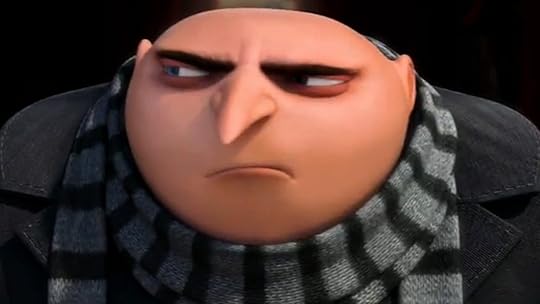The Villain In The Mirror: What Fictional Bad Guys Can Teach Us About Real Ones

When I started writing my novel Godstorm, I assumed villains would be the easy part. Especially when writing climate fiction, the bad guys would be easy: they are literally destroying the world!
Give them a haughty sense of entitlement or venial obsession with their own selfish desires, and send them off to do their worst.
I was wrong…for a fascinating (and helpful) reason.
Writing believable ‘antagonists’ is one of the greatest challenges in fiction. Because the only way to make a bad guy or girl work on the page is to make them think they’re the good guy.
Villains, the compelling ones at least, never think of themselves as evil, or even misguided. They believe they’re principled, justified, visionary, and at worst, misunderstood. They must truly believe that they’re fixing the world, not breaking it. They’re not trying to be the problem. In fact, they’re certain they’re the solution.
Sound familiar?
In fiction, this is a necessary technique. In the real world, it’s a trap. And when it comes to climate change, it’s one we fall into again and again.
Everyone Is The Hero Of Their Own StoryWhen I wrote Godstorm, I found myself drawn into the back story of my antagonist. He is ruthless, yes. Manipulative, certainly. But he isn’t wrong in the head. He has a very clear logic, deep values, and a burning sense of purpose.
To write him convincingly, I had to believe him. I had to put down my moral high ground and step inside his motivations.
It was a little unsettling. And strangely familiar.
Because quite a lot of my career has been an attempt to communicate with people who are making terrible choices (for our health and our planet). And I learnt a long time ago that I wouldn’t get far telling them they’re terrible. Try that and they’ll stop listening. Because they know they’re not.
This is especially true in climate communications. The oil executive, the consumer flying first class, the policymaker kicking the carbon can down the road, they all have a mental construct in which they are the hero. Maybe they’re providing energy security. Maybe they’re keeping their family safe. Maybe they’re boosting GDP, or preserving jobs, or saving up for their child’s future.
They don’t see themselves as the villain. And if you tell them they are, you don’t make them rethink. You make yourself the villain in their story.
The Mirror Test: Why Blame BackfiresThere’s a cognitive truth at play here. Humans have a powerful bias toward moral self-coherence. We need to see ourselves as good, even when our actions suggest otherwise. This is supported by work in moral psychology: researchers like Jonathan Haidt (author of the excellent book The Righteous Mind) show that people intuitively justify their behaviour and then rationalise it after the fact, especially when their identity is at stake.
If something threatens that self-perception, we defend, deflect, or disbelieve. Psychologists call this identity-protective cognition: a bias where people reject information that threatens their group or personal identity, even if it’s factual.
Our brains literally won’t let you accept that we’re the bad guy.
That’s why shame-based messaging almost always fails in climate action. A study by Feinberg and Willer found that messages focused on doom and guilt reduced support for environmental policies. Another by Moser and Dilling confirmed that fear-based climate communication often leads to denial or disengagement unless paired with hope and efficacy.
Accusations trigger our mental armour. Labels of ‘climate criminal’ or ‘denier’ might feel cathartic, but they rarely change minds and can instead entrench identities.
Fiction follows the psychological rule that everyone looks in the mirror and sees a hero.
Telling Better Stories: Reframing Climate HeroesSo what do we do instead?
We write better stories. We expand the narrative frame so that people can see themselves as climate heroes, without having to change their entire identity or admit their sins. We give them the role of the problem-solver, the innovator, the protector, or the wise ancestor. We don’t make them the enemy. We make them the main character in a different story where climate action is aligned with who they already believe they are.
The great lesson of writing villains is that empathy is the ultimate tool of understanding. When you walk in your antagonist’s shoes, you learn what moves them. And once you know that, you can write the moment they choose redemption, or refuse it.
In climate storytelling, that turning point matters more than anything. Because the story isn’t over yet. We’re still in the rising action. The climax is coming, and every character matters. Even the ones you think are on the wrong side.
So next time you sit down to write, speak, or campaign, ask yourself this: who do they believe they are? What’s their story?
Because until you can answer that, you’ll never be able to change the ending.
…………………………………………….
In other news:I’m recruiting a ‘launch team’ of volunteers to help promote my debut novel Godstorm. Sign up, and you’ll get a free e-book copy of the novel to review (before anyone else), as well as all the gossip and goodies. To sign up, click here.



